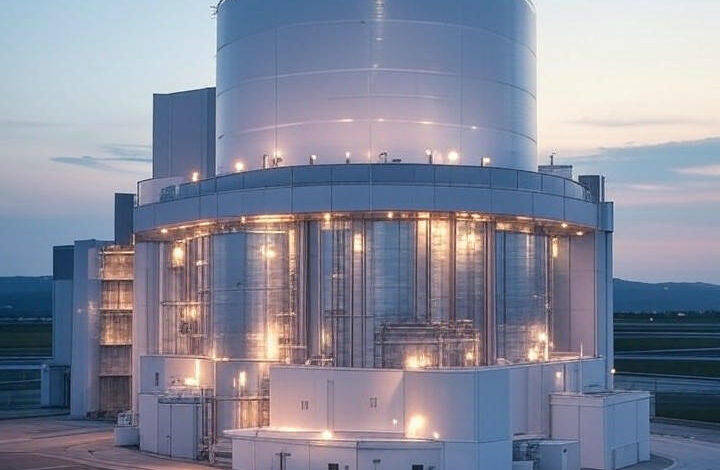U.S. Unveils $80B Nuclear Initiative to Meet AI Power Surge

UPDATE: The U.S. government has just announced an ambitious $80 billion partnership with Westinghouse Electric Co. to construct new nuclear reactors, aiming to meet soaring energy demands driven by artificial intelligence. This significant initiative, revealed on October 28, 2025, positions the U.S. to enhance its energy independence and compete with global powers like China.
This groundbreaking deal includes commitments from Westinghouse, which is owned by Brookfield Asset Management and uranium producer Cameco Corp., to build a series of nuclear power plants across the country. The collaboration is bolstered by crucial financing and regulatory support from the U.S. government and international backing from Japan, providing American taxpayers with ownership stakes in these projects, as reported by The Washington Post.
The initiative responds to an urgent need for reliable energy sources as the demand for electricity surges, particularly from AI-focused data centers. Analysts predict that this venture could create over 100,000 jobs in construction alone, revitalizing the American workforce and delivering economic benefits across multiple states.
Historically, the U.S. nuclear sector has struggled, with only three new reactors constructed this century. The Trump administration’s new push aims to overcome these challenges by facilitating substantial financial investments in nuclear technology. The focus is on Westinghouse’s AP1000 reactor design, which has demonstrated efficiency in projects like the Vogtle plant in Georgia.
Industry experts highlight that this deal could lead to the construction of at least eight AP1000 reactors, each capable of powering hundreds of thousands of homes. However, questions remain regarding specific timelines and locations for these new builds, as noted by analysts from Ars Technica.
Cameco’s stock surged following the announcement, reflecting optimism in the uranium market, which is crucial for the upcoming reactors. The partnership is also seen as a strategic move to counter China’s growing influence in nuclear technology exports, aligning with U.S. interests in energy independence.
Moreover, the initiative emphasizes the urgency of addressing the energy needs of tech giants like Microsoft, which has secured a $16 billion deal for nuclear power output. The collaboration aims to tackle the escalating electricity demands spurred by the AI revolution.
As part of the plan, Westinghouse previously pledged to construct 10 large reactors by 2030, generating an estimated $6 billion in economic impact and 15,000 jobs in Pennsylvania alone, according to CNBC. The expanded $80 billion agreement now aims to establish a national framework for a nuclear renaissance.
Officials indicate that the financing structure will include significant U.S. government support, along with international investments to ensure project viability. This approach aims to mitigate risks for taxpayers while providing potential returns, as detailed by Bloomberg.
However, the initiative is not without its challenges. The Nuclear Regulatory Commission will impose regulatory hurdles and environmental reviews, raising concerns among critics about waste management and environmental impacts. Advocates, on the other hand, argue that the low-carbon profile of nuclear power aligns with climate goals, especially crucial for energy-intensive AI operations.
Reactions on social media reflect a mix of optimism and skepticism. Energy experts emphasize the transformative potential of this deal, pointing to the necessity of nuclear energy in the future energy landscape.
Looking ahead, this partnership signifies a pivotal moment in U.S. energy policy, potentially setting the stage for expanded investments in nuclear technology. The urgency of this announcement underscores a broader shift toward strengthening the domestic energy sector in the face of rising global competition.
As developments unfold, stakeholders will watch closely for updates regarding the specific locations of the new reactors and the timeline for construction. The outcome of this initiative could reshape America’s energy landscape and economic prospects for decades to come.






